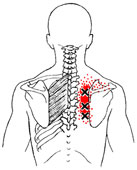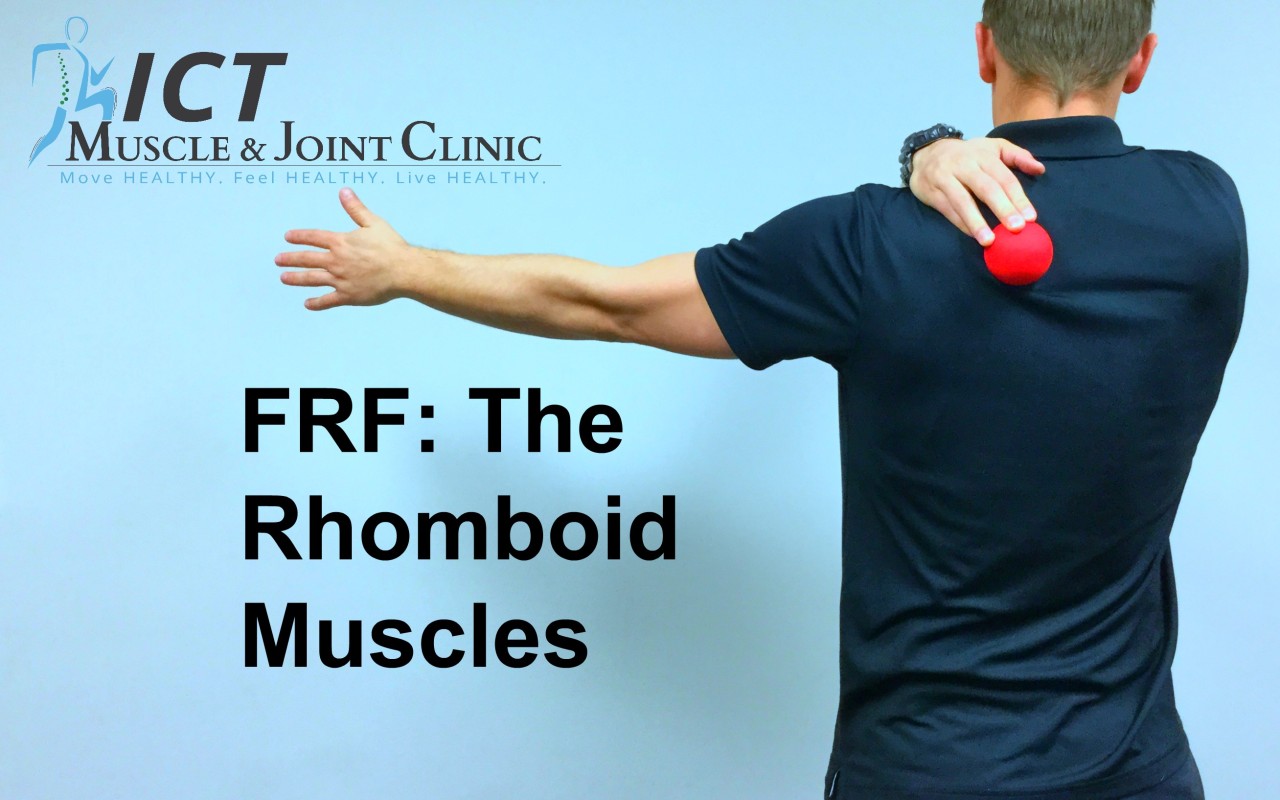FRF: The Rhomboid Muscles
Back pain is a common occurrence for many Americans with our daily cubicle-esk lifestyle. Overtime, rounding the back can lead to trigger point formations in the rhomboids, which may produce pain. Rolling out the rhomboid muscles with a lacrosse ball, can help decrease pain within the middle back, improve scapulothoracic range of motion, and improve power output.
The Functional Anatomy: Rhomboid Muscles
When talking about the rhomboid muscles, it is important to understand they are one aspect of a collective whole that generates motion and stabilizes the shoulder blade and spine throughout motion. With anatomy, muscles are often thought of as starting on one bone and attaching to another; also, they have an origin and insertion with a defined movement pattern. These concepts are not wrong, per say, however they are highly outdated. Muscles can attach to other muscles, fascia, and also form large, unified tendons with other muscles.
The rhomboid muscles are often discussed as starting at the CT (cervicothoracic) junction of the spine and attaching to the medial border of the scapula (shoulder blade). However, the rhomboids have a stronger attachment to the serratus anterior than the shoulder blade itself. This means that the rhomboids and the serratus anterior have a stronger connection to each other than either does to the shoulder blade. When viewing the rhomboids from the back, they run obliquely downward from the spine to the shoulder blade, while the serratus anterior fans out attaching to the 2nd-9th ribs. This allows the serratus anterior to help pull the shoulder blade forward into upward rotation, in a fluid and dynamic manner. They collectively form a sling for the shoulder blade to travel along the rib cage. This is only part of how the shoulder blades' dynamics occur and how intergrative the interconnetiveness is between the muscular and osseous (bone) system.

When pain is present, between the shoulder blade and the spine, the rhomboid muscles might be the pain generator. As noted in the picture to the right, the trigger points associated with the rhomboid muscles produce local pain to the center of coordination (CC). Try using the techniques in the video shown below to help allieviate potential pain originating from the rhomboid muscle group.
The Why: Rhomboid Muscles
The why was stated at the end of the first paragraph: Foam rolling the rhomboid muscles can help alleviate middle back pain, improve shoulder mechanics and improve power output. Whenever trigger points are present, the body is not performing ideally within those regions. It does not necessarily need to be addressed in every single person. However if you feel you are in pain, a functional-fitness person, or are seeking improved strength, try foam rolling the rhomboids.
About the author
Dr. Keith Sparks is an award-winning chiropractor, functional medicine expert, and the co-founder of ICT Muscle & Joint Clinic. Dr. Sparks’ emphasis of care originated within the fields of rehabilitation, soft-tissue therapies, and chiropractic. To date, he has brought this unique combination of skills into union with functional medicine. The sole purpose of intertwining these distinct skills, knowledge, and services is to provide incomparable care to his local community. Dr. Keith Sparks is often seen in the Wichita, KS community speaking at business events and teaching health and performance classes.
